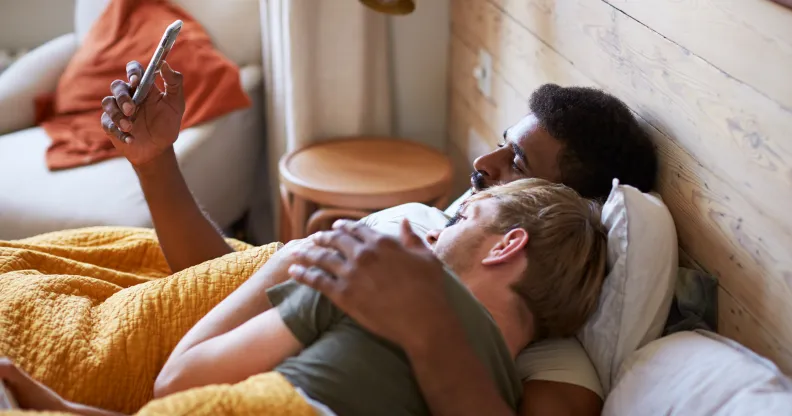Almost seven out of ten US same-sex couples now meet through online dating

Envato
65 percent of same-sex couples in the US now meet online and through dating apps, compared to 39 percent of opposite-sex couples, a study has shown.
Researchers Michael J Rosenfeld and Sonia Hausen of Stanford University, along with Reuben J Thomas of the University of New Mexico, gathered data from two previous studies to publish ‘Disintermediating your friends: How online dating in the United States displaces other ways of meeting’.
According to the study: “From the end of World War II until 2013, the most popular way heterosexual Americans met their romantic partners was through the intermediation of friends… The rise of the Internet has allowed individuals in the dating market to disintermediate their friends, i.e. to meet romantic partners without the personal intermediation of their friends and family.”
The difference with same-sex couples, researchers said, is that while most straight people can find other straight people to date fairly easily through family and friends, LGBT+ people are “hard to find” without the help of the internet.
The study states: “Larger choice sets are especially valuable for people who are searching for something unusual or hard‐to‐find, which is why online dating is even more valuable for gays and lesbians than it is for heterosexuals.”
Online dating can also be more valuable to those LGBT+ people that want to keep their sexual orientation or gender identity a secret from family and friends.
According to the researchers: “Individuals might not want to share their dating preferences and activities with their mother or with their friends.
“Active brokerage of romantic partnerships by a family member or friend would depend on the broker knowing what both individuals desire in a partner.”
In response to the popularity of online dating among LGBT+ people, new queer dating apps constantly being developed and apps mostly used by non-LGBT+ people are making steps to become more queer-inclusive.

